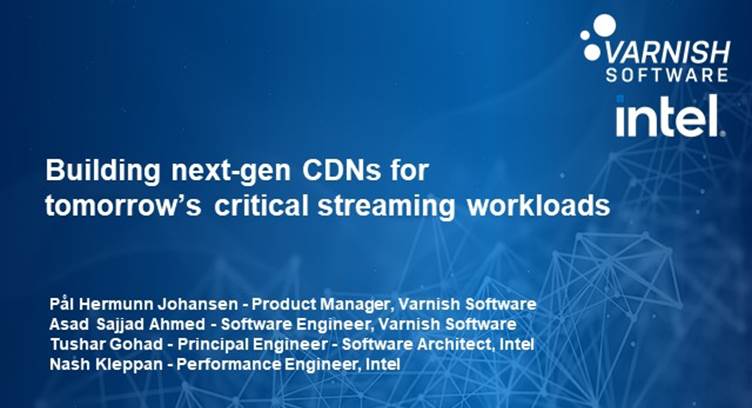Varnish Software on Wednesday announced new CDN performance milestones for Video-On-Demand (VOD) and Live Linear use cases.
Varnish Software, an Intel Network Builders ecosystem partner, tested the performance of its Varnish Edge Cloud solution under real-world conditions. The tests used 3rd Generation Intel Xeon Scalable processor-based servers conforming to the Intel Select Solution for Visual Cloud Delivery Network. These servers were further configured with hardware acceleration and software optimization, including NUMA-awareness capabilities.
The results, first unveiled in a virtual demo at MWC Barcelona, show:
Video on demand CDN (1 socket): Up to 192 Gbps network throughput with 3rd Gen Intel Xeon Scalable platform featuring gen 4 Intel DC P5510 SSD. Video on demand CDN (2 socket): Up to 383 Gbps network throughput with 3rd Gen Intel Xeon Scalable platform featuring gen 4 Intel DC P5510 SSD. Live linear video CDN: up to 1.74x higher performance on 3rd Gen Intel Xeon Scalable Platform supporting Intel Optane persistent memory 200 series, compared with prior generation
For OEMs, SIs and CoSPs, the results also establish a specific method for building faster, more cost-effective, CDN solutions capable of handling more users at the same resolution, or serving higher-resolution content to a similar number of users. The combination of Varnish high-performance caching software and latest generation CPUs from Intel delivers the capacity, I/O and compute performance required to keep up with growing demand for streamed content.
Lars Larsson, CEO, Varnish Software
We’re not only approaching line rate speeds and unlocking the capacity to handle huge streaming demand, but making it more cost efficient to do so. It simplifies deployments too, showing how CoSPs can implement the solution and achieve leading performance themselves.
Espen Braastad, VP Engineering, Varnish Software
Our latest performance results are due, in part, to non-uniform memory access (NUMA) capabilities added in the latest Varnish software release, enabling each CPU in a dual-processor system to have direct and fast access to memory.






















